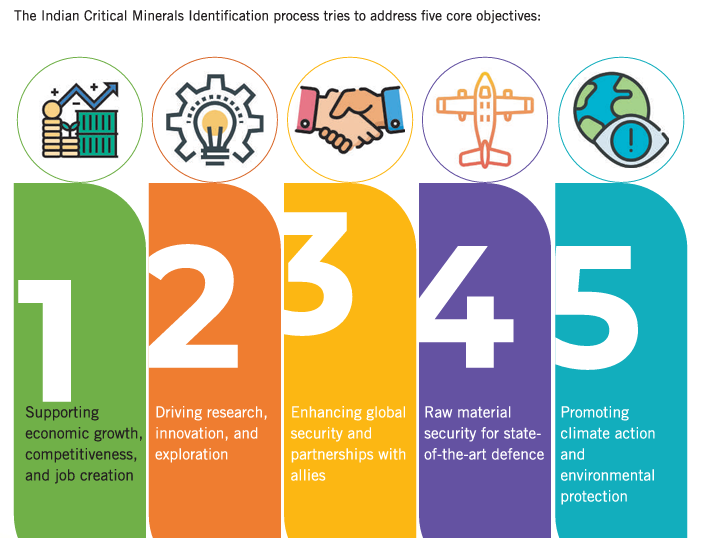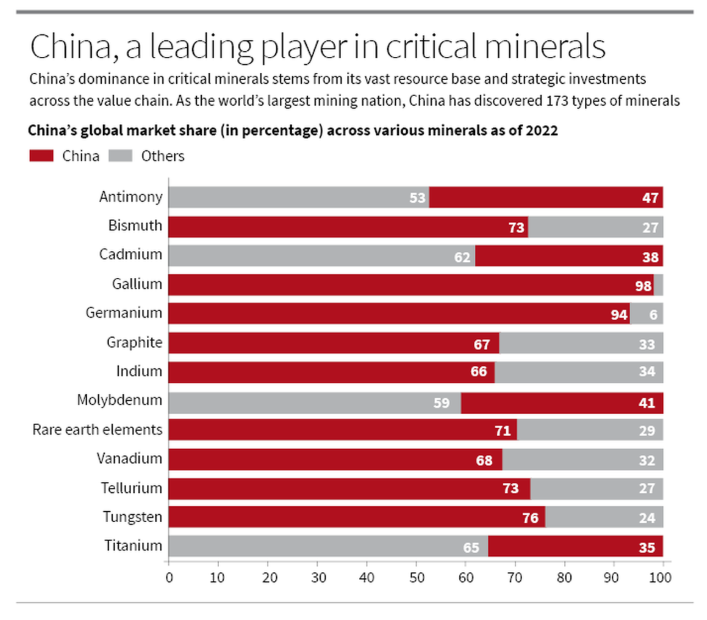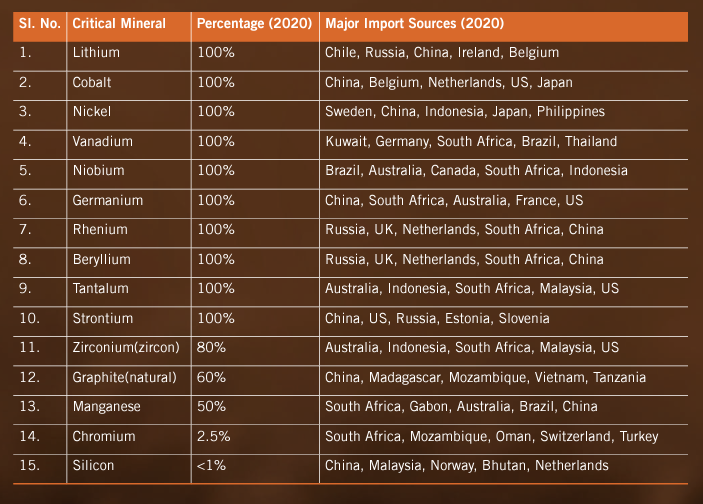India to kick off critical minerals mission to bolster energy transition, EV manufacturing.



|
Mineral |
Usuage |
China’s Dominance |
|
Bismuth |
Primarily used in pharmaceuticals and chemicals |
80% of global refinery production |
|
Lithium |
Crucial for EV batteries and energy storage |
58% of global refining |
|
Tellurium |
Important for solar power and thermoelectric devices |
60% global production |
|
graphite |
Indispensable for EV batteries and steel production |
Controls 67.2% of global output |

Why does India rely on imports?
|
Minerals |
Bismuth |
Lithium |
Silicon |
Titanium |
Tellurium |
Graphite |
|
Import dependency on China |
85.6% |
82% |
76% |
50.6% |
48.8% |
42.4% |

Khanij Bidesh India Limited (KABIL), is a Joint Venture of National Aluminium Company Ltd. (NALCO), Hindustan Copper Limited (HCL) and Mineral Exploration & Consultancy Limited (MECL) .